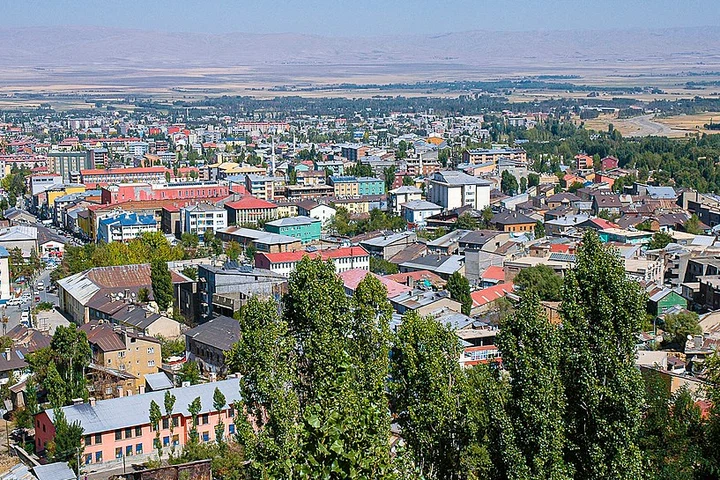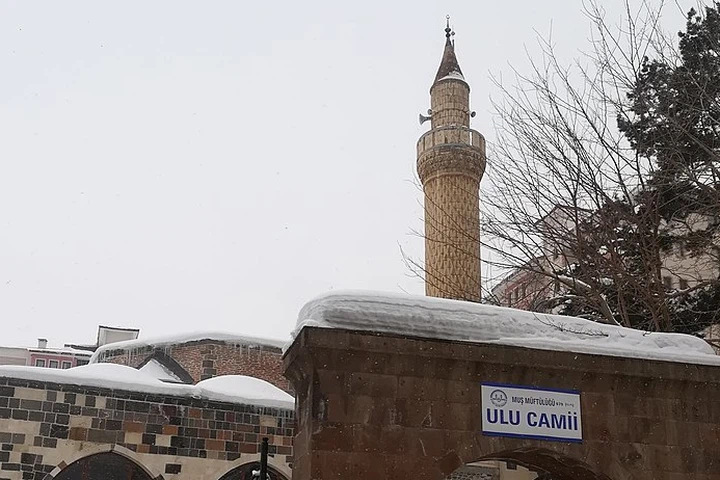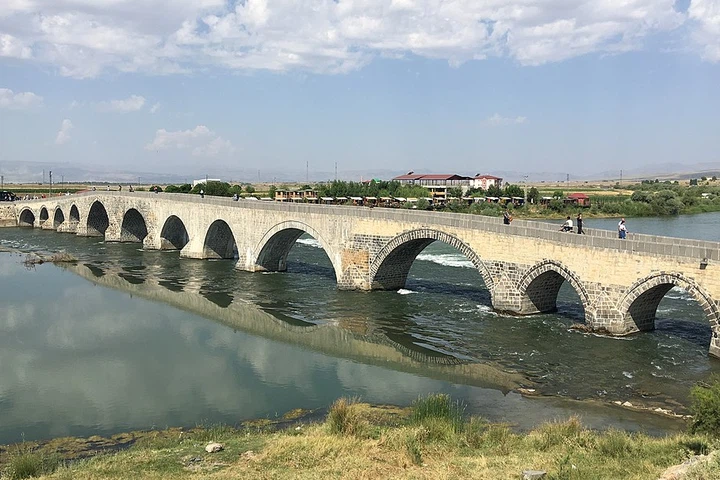Muş
Mus-Based Companies All Companies

Thanks to the Muş bus ticket, you can travel to one of the most beautiful cities in the Eastern Anatolia Region. It is one of the Anatolian cities that allows you to travel to the past with its historical buildings. In order to reach the must-see places in the center and some districts without any problems, it is sufficient to plan your trip for 2 to 3 days. Although it is known for its historical richness, there are also many places worth seeing with their natural beauties.
Mus Castle
Muş Castle is located in the city center. It is known as the oldest settlement in the city. Although there is no definitive information about when and by whom the castle was built, the name of the castle is mentioned in the writings about the wars of the Mongol Invasion period. Hz. During the reign of Omer, the castle was captured by Muslims. The castle was heavily damaged during the Arab wars to capture and settle Anatolia and many other wars. On the side of the castle, there are cemeteries belonging to the Seljuk, Arab and Ottoman periods. Muş Castle is one of the important cultural heritages as it bears traces from different civilizations. The castle, which is open to visitors, is among the must-see places.
Starry Inn
It is located in the city center, in a place called Demirciler Street. Yıldızlı Inn was built by Miralay Seyfi Bey in 1307. Mud brick was used on the upper floor of the two-storey building and cut stone was used on the lower floor. Traces of Seljuk period architecture can be seen in the building. Yıldızlı Inn is located on the Silk Road. It is located in an important location in terms of trade and accommodation. It operated as a trade center when it was founded. On the ground floor, there are drapers, jewelers and coppersmiths. On the upper floor, there are 52 shops along with the hotel. Yıldızlı Inn, which was severely damaged during the Russian Occupation, was restored by the Ministry of Culture and Tourism. It is one of the historical buildings among the places to visit in Muş.

Muş Grand Mosque
The mosque, located in Muş, Kale District, was built with overflowing rubble. Since the Ulu Mosque does not have an inscription, it is not known by whom and when it was built. According to rumors and guesses, it was built in 979 by Sheikh Mohammedi Moor, whose tomb is in the courtyard. The Grand Mosque has a rectangular plan, and when its architectural structure is examined, traces from the late 19th century can be seen. It is one of the important religious buildings for Muş. The mihrab of the mosque is quite plain, with a dome in the middle and a barrel vault on the sides. The minaret of the mosque was destroyed during the earthquake in 1966, and the minaret was rebuilt in 1968.
Arak Monastery
It is not known exactly when the monastery, located in Kepenez Village, Muş, was built. According to some sources, Arak Monastery is thought to have been built by St. Grigor the Enlightener in the 4th century. Lines from the Roman Period can be seen in the architecture of the monastery. The monastery, also called the Monastery of the Holy Apostles, is located on the plateau below Kepenek Village. The word Arak is a Persian word and means wine. It is thought that there were grape warehouses in the past in the area where the monastery is located. Arak Monastery was used as a center of worship for Armenians until 1915. The monastery, which was used for different purposes, was blown up by the Muş Governorship in 1960. Arak Monastery left behind two church ruins.

Murat Bridge
The bridge located on the Murat River, according to estimates; It was built in the 13th century during the Seljuk Period. Although the year 1871 is written on one of the marbles on the bridge, according to research; The bridge was restored during the Ottoman Period. The bridge has a length of 143 meters and a width of 5 meters. The bridge, which is actively used by local people, is very well preserved. The bridge, which offers a beautiful view over the river during the day, has a special beauty with the lighting in the evening. You can reach the region by public transportation via Muş Bus Terminal.
Crusader Lake
Haçlı Lake is a volcanic barrier lake located in the southern region of Bulanık district of Muş. Haçlı Lake, also known as Bulanık Lake, got its name from the fact that its water is not clear. The surface area of Lake Haçlı, whose depth is 7 meters at most, is 27 square kilometers. The water level of this lake, which is fed by Şeyhtokum Stream and many other sources, remains almost the same throughout the year. It becomes possible to walk on the frozen lake surface during the winter months. People who visit Muş in winter may have a different experience. Lake Haçlı, which is home to many species such as trout and mirror carp, provides many opportunities such as tourism and irrigation of the surrounding lands.
Kayalıdere Ancient City
The ancient city, located in the Varto district of Muş province, was used as a settlement by the Urartians. Kayalıdere Ancient City is also known as the Urartian Rock Cemetery. II. The ancient city, which is estimated to have been built during Sarduri times, was used as a military settlement. It is one of the most preserved historical buildings in the Muş region. It is one of the places that attracts a lot of attention from tourists. Although the date when the ancient city was founded is unknown, according to estimates; B.C. It is considered a time between 756 and 730. The artifacts unearthed as a result of archaeological studies in Kayalıdere Ancient City are exhibited in Ankara Anatolian Civilizations Museum. Many different historical artifacts, such as a bronze lion statue, arrow heads and a belt depicting a lion, have been found in the works. It is one of the locations that should be added to the high school prepared after purchasing the Muş bus ticket.
Victory Monument
The Victory Monument, located in the Malazgirt district of Muş, was built in memory of the Malazgirt Victory. The two columns facing each other have a height of approximately 42 meters. While the columns represent the gate of Anatolia, the spaces between the columns represent the passage of the Turks to Anatolia. Victory celebrations are held on August 26 in the area where the monument, which has great spiritual importance, is located. If your visit to Muş coincides with the anniversary of the Malazgirt Victory, it is one of the places you should definitely visit. Transportation is easy thanks to the minibuses serving between Muş and Malazgirt.
Lake Akdogan
Located in the Hamurpet Mountains, the lake is also known as Hamurpet Lake. The lake has an altitude of 2173 meters and there are steep rocks around it. The deepest part of Akdoğan Lake is 47 meters. The color of the lake, which has a very low depth, appears green. It is fed from different sources such as snow and rain water coming from the Hamurpet mountains. It is one of the beautiful lakes in Muş and is a very convenient place to see its natural beauties and spend time in nature. The nature around the lake is quite impressive and is ideal for picnics and walks in the fresh air. It is one of the nature attractions among the places to visit in Muş.
Manzikert Castle
Malazgirt Castle is located in the Malazgirt district of Muş. As a result of historical research, it is thought that Manzikert Castle was built during the Urartian period. This castle, known as Berber Castle until the 1070s, began to be called Malazgirt Castle after the 1071 Malazgirt Victory. Although special stones and Khorasan mortar were used in its architecture and construction, Malazgirt Castle was heavily damaged and destroyed during the Byzantine period, it was subjected to restoration works in various periods and managed to preserve its name in history. Manzikert Castle, which came under Ottoman rule during the reign of Mehmet the Conqueror, is one of the historical buildings worth seeing in Muş with its impressive architecture. You can go to Malazgirt via Muş Bus Terminal. It is one of the locations where a route should be created to see one of the important historical heritages of the city.

